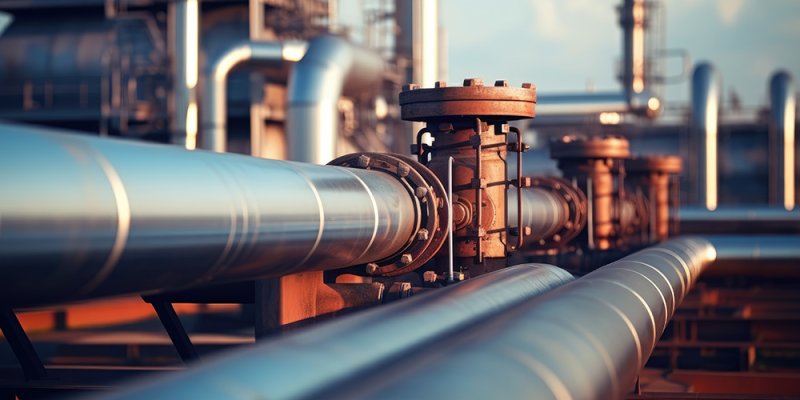

Topic of the month:
L-/H-gas conversion
L-/H-gas conversion
Sometimes things happen surprisingly! April 20 was such a day of surprise. On that day, the ministry of economics and energy (BMWi) sent the draft of the amendment of the ordinance provision on the access to the gas networks (GasNZV) to the associations. I was puzzled after a first electronic browsing through the draft. It stipulates rather bluntly a merger of the two German market areas. Without any additional evaluation or cost-benefit analysis the TSOs are obliged to merge the two market areas until 2020. Since then the stakeholders have been wondering about the ministry’s reasons. I do not know them. The formal reason in the draft of the ordinance provision is not really convincing. The BMWi argues that the application of different rules within Germany must be avoided. That may happen – according to the ministry – if each of the German market areas merges separately with an adjacent foreign market area. But the German government should be strong enough to rebut in Brussels any proposal that allows such a merger without a BNetzA veto. The German influence on all network codes that have been approved until now is substantial.

Framework conditions
Ordinance provision on the access to gas networks
Something surprising appeared in the in-box of the associations of the gas industry. It was the draft of the amendment of the ordinance provision on access to the gas networks (GasNZV) that was already scheduled for March. And the draft proposes the following change of section 21: “The TSOs must merge the two exiting market areas into one at the latest from April 1, 2022”. No one expected such a far-reaching proposal. One of the cornerstones for January’s amendment was the consideration of the results from the BNetzA market dialogue for an integration of market areas. But the result was that neither BNetzA nor most stakeholders wholeheartedly supported a further integration of market areas; instead they pledged at least for a thorough cost-benefit analysis before any further action. The ministry of economics and energy (BMWi) writes in the justification of the draft that a monetary evaluation of the benefits is no longer sufficient. National as well as European discussions about potential cross-border mergers of market areas must be considered. And at another part of the reasoning the ministry writes: A merger of the two German market areas should avoid any discrimination within Germany that may occur if only one of the two German market areas is merged cross-border with another market area. But the Wagner, Elbling & Company (Wecom) study that kicked off the BNetzA market dialogue explicitly recommended only a joint merger of the two German market areas with the TTF for further evaluation (ener|gate Gasmarkt 06/16). Therefore, the surprise of the reasoning. However, Open Grid Europe (OGE) has over the last two years worked jointly with the Belgian Fluxys on a merger of the NCG market area with the Belgium market (ener|gate Gasmarkt 09/16). In July last year, four energy experts from the parliamentary groups of CDU/CSU and of SPD wrote a letter to the ministry of economics at that time, Sigmar Gabriel, and asked him to support the project. But in the meantime, the involved parties more or less terminated the project because of a lack of success. Nevertheless, the spokesman of the OGE management board, Stephan Kamphues thinks the ministry’s proposal will lead to a dead end and not to the European bandwagon of further market integration. In a statement on the draft of the GasNZV he said: “The further integration of market areas is important. But it should in any case be implemented as a European solution, i.e. a cross-border market area solution, as OGE has been demanding for a long time.”
Company strategies and results
GASAG
GASAG is very satisfied with the business year 2016 and the development of the company. “You are seeing very satisfied people in front of you”, were the words of the GASAG CEO Vera Gäde- Butzlaff to kick off the annual press conference. The GASAG executive board is among other things satisfied that the financial burden from the closure of the storage facility (ener|gate Gasmarkt 02/17) did not lead to diminished profitability. GASAG had to write off 81 million euros on the value of the storage facility. Nevertheless, the earnings before interest and taxes (EBIT increased slightly from 113 to 117 million euros. The earnings before depreciations (EBITDA) show the strength of the 2016 results without the extra burden. It soared by 40 per cent to 275 million euros. Considering the thin margins in the energy sales business – which is still the main part of the GASAG business – this is an astonishing result. But the decreased gas prices compared to 2015 brought procurement costs down and were responsible for extraordinary earnings from the re-valuation of positions. The last upswing came from the weather. It was colder than 2015. GASAG’s main business is gas sales in the residential gas user market in Berlin and GASAG did not adjust prices in 2016. That certainly had a positive effect on the margin. Prices were not decreased before January 1, 2017.

Frequently asked questions
What is the energate Gasmarkt?
The energate Gasmarkt provides specialists and executives in the gas industry with up-to-date information and background information on the German and international gas market. The medium expertly explains the most important developments in the fields of market, law, politics and business. In addition, the energate Gasmarkt offers insider information such as market rumors and personal details.
What is the energate Jahresreport Gas?
The energate Jahresreport Gas traces the most important market developments of the year and provides a well-founded outlook for the coming months. Gas expert and insider Dr. Heiko Lohmann analyzes relevant events in politics, law and regulation as well as on generation, infrastructure and trade. In addition, the report provides information on changes in the corporate landscape and tracks price developments in market reports. Top decision-makers from the industry use the Jahresreport Gas as a compact chronicle of the year and to assess future market developments.
How often are these publications released and in which formats are they available?
The energate Gasmarkt is published monthly. Subscribers will receive the energate Gasmarkt as a print and PDF version in German and English. The Jahresreport Gas is published annually (beginning of December).
Can I purchase individual issues of the energate Gasmarkt?
Yes, you can purchase individual isses as print or PDF version. Payment options include purchase on account, credit card or PayPal.
How much is a subscription of the energate Gasmarkt and how much does the Jahresreport cost?
A subscription to the energate Gasmarkt (single licence) costs 110,- Euro/month (plus VAT). An edition of the Jahresreport Gas costs regularly 390,- euro (plus VAT).
Are there any special conditions if several employees in a company would like to receive the Gasmarkt?
With several Gasmarkt recipients in one company, the price of the second and all other licenses is reduced significantly. We are happy to make you a fair offer for team or corporate licenses!
What benefits do I get by registering?
A free energate account is required to order the energate Gasmarkt or the energate Jahresreport Gas. Registered users receive an overview of the contents of the current issue of energate Gasmarkt by e-mail on the day of publication.
I would like to read energate Gasmarkt or energate Jahresreport Gas digitally. Where can I find my e-paper version?
As a subscriber to energate Gasmarkt or as a purchaser of energate Jahresreport Gas, you will also receive an e-paper version in addition to the print edition. You can find it at online.energate-gasmarkt.de. Please use your energate account to log in.

